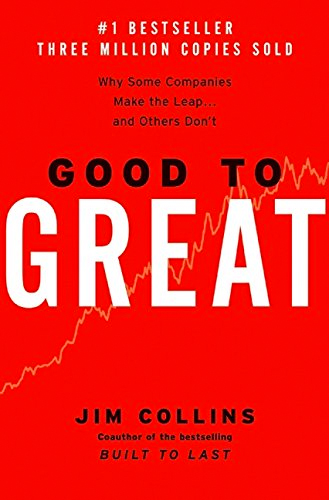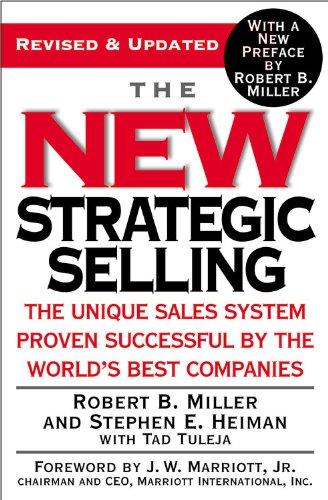|
In my work with clients, especially industrial B2B clients, I often find that we wind up discussing one particular issue: the lack of business from "new" customers/clients. Several months ago, I began jotting down my thoughts and ideas on the subject. As I reflected on what I wanted to say and how I wanted to share my thoughts, a new idea surfaced — why don't I invite a guest blogger to assist me?
For the next several weeks, you're in for a very special treat. Our guest blogger is someone I have known his entire life. I have observed him in many different situations and environments, and his relationship-building skills are extraordinary. In case you haven't already guessed his identity from those clues, I am referring to "Uncle" Dan. Many of you know him as Dan Doescher — who, after an exceptionally successful and rewarding career, left Plante Moran and launched Sandbox Partners International. Sandbox is a firm that represents companies and gives them this promise: "Bringing partners the lifeblood of new business." While at Plante Moran, Dan was often pointed to as the poster child for a new business development/rainmaker partner. Among a vast variety of different industries, he was successful in attracting new clients representing government, manufacturing, distribution, automotive and service businesses to Plante Moran.
In preparing for this "Hunter" series, I have read a number of great books and articles (including some recommended by several of my readers) describing the "best" salespeople. Dan and I have our thoughts on this topic, and we like to say, "The most successful business developers are professionals who meet the needs of others first." As I have studied this subject, I have thought of a number of you whom I believe excel in this area. For that reason, it was hard to narrow the choice to Uncle Dan, but when I benchmark him against the criteria of the experts, he — like many of you — is a bull's eye.
I hope you have as much fun reading the Hunter series as Dan and I have had writing it. Enjoy!
STEP 1 — What is a Hunter?

What's in a word — or, rather, what the heck do I call myself?
"Salesman" remains an uncomfortable label. To me, that focus has a "self-interest-first" feel. Initially, "hunter" didn't feel quite right, either. I believe it, too, connotes high self-interest — which is generally a win/lose proposition. Merriam-Webster finally got my attention. It defines "hunter" this way: "A person who searches for something." So in this series, consider that a "hunter" is someone focused on searching for unmet needs. The emphasis shifts from "making a sale" to finding the place I believe the most successful business developers spend their time — meeting the needs of others first.
Hunters can be both inside employees and outside independent contractors/representatives. Regardless, what do the best hunters look like? Thoughts on this vary, but given the definition above, consider the following:
- Hunters are effective at developing relationships with and helping people — they're able to gain trust.
- Hunters are great communicators who place a strong emphasis on listening (do the math; we have two ears and one mouth).
- Hunters are smart, with an ability to think strategically and out of the box.
- Hunters are inquisitive when it comes to identifying unmet/unsatisfied needs — they're able to create "pull" scenarios to meet needs, versus "pushing"/selling.
- Hunters are calculated risk-takers.
- Hunters are disciplined, persistent and competitive.
- A hunter believes in and is passionate about what they do.
- A hunter is able to balance the short- and long-term; they realize sometimes it's better to back off. Pushing may destroy an opportunity permanently.
Finding the right person is important. Equally important is how you treat them once they join your team. A few considerations:
- Make sure you have a clear understanding of the hunter's role in pricing. It helps avoid miscommunication, unmet expectations and lost opportunities.
- Do your homework when it comes to compensation. Treat these individuals commensurate with the value they bring. If you want better candidates, think upper quartile in the marketplace.
- Beware of making the best hunter the manager. The skills that are required for each role are very different, and not necessarily interchangeable.
STEP 2 — Let's Get Growing
Maintaining status quo as a sustainable option is a risky strategy. Compared to your competitors, you're either growing or you're declining. Knowing why you want to grow is a critical first step in developing your plan — just be aware that growth for growth's sake isn't a recommended strategy. In this series, my focus will be limited to new customer/client attraction.
Thinking that growth automatically results in higher profitability is tempting, but it's not necessarily true (think GM). While increasing profits is a great reason — and often a driver — for growth, there are other reasons to consider growing. Some of them might include:
- Building a stronger base and critical market mass for entity continuation.
- Increasing specialization to better meet customer/client needs.
- Expanding product/service offerings to become a full-service solution.
- Entering new geographic markets to build/expand competitive advantage.
- Increasing your opportunity to acquire competitors or as an exit strategy.
- Increasing opportunities for current and future staff.
- Increasing pay to help attract the best talent.
As noted, increasing profits is a worthy pursuit. Even so, a balanced approach is advisable. Be mindful of Arthur Andersen's infamous demise, which was set up by the company's unreasonable focus on growth for the purpose of increasing profits.
When properly approached, strategic planning will define the "why" you want to grow, provide alignment for how to allocate resources, and focus your team's efforts. However, this doesn't mean you're ready to engage in growth-oriented efforts. There are several fundamental questions you should consider before proceeding, such as:
- Are you scoring better than average, or perhaps even in the upper quartile, with existing customer/client satisfaction and profitability? The worst thing you can do is put your current customer/client base at risk due to the potential distraction of chasing new business.
- Who will lead the new business development? Are they truly empowered to make things happen, and do they have the time to devote to such an effort? This isn't easy stuff to begin with, so not having the right team properly equipped is likely a doomed effort.
- Are your systems (operations and administration) sufficient to respond to new business?
- Are you prepared to invest the additional money needed to ensure the effort has a sustainable opportunity for success? On this point, budgets/plans are always recommended to help define success, to set expectations (both your own and those of others), to provide a compass showing your current position, and to give you the opportunity to change directions when needed — which is inevitable.
If your responses to these questions aren't clearly affirmative, it's likely more work is needed in these areas, and proceeding without additional thought and planning could result in more harm than good.
STEP 3 — Who We Are and Why We're Here
Assuming growth is a priority and you understand why you want to grow, it's critical to ensure that your most important resource, your team, is on board with you. Inherent in "on board" is reaching a clear understanding and alignment of "why."
Call it whatever you like — mission, purpose, vision — but define it. If you already have a mission/purpose/vision, review it for reconfirmation and redouble your commitment. It should be very specific, brief — preferably a dozen words or less — and easy to remember. Ideally, its creation is a team effort that will result in shared alignment and passion. Ultimately, it drives a "way of life" in your business.
Be disciplined in this process. Some team members will have laser-like focus, while others can take you into the weeds. Consider capturing your core values first. Whether you've ever considered core values or not, you have them — you believe them, you operate by them — so simply reduce them to writing. Keep the list reasonably brief, three to six ideals, and make sure they're a reflection of what really matters to your organization — how you want potential customers/clients to see you.
Why is the "why" so important? The alignment of your company's efforts begins with an alignment of thoughts. Developing tactical efforts requires making decisions about resource allocation, and a clearly defined consensus of thought becomes your compass for decision-making. This enables you to make the tough choices when developing your action plans.
James Dibler, an owner and CEO of BlueRock Technologies, has taken this effort to a whole new level. As team members join the firm, they are required to read Jim Collins' books Great by Choice and Good to Great, and Tony Hseih's book Delivering Happiness. Then the new members are asked to summarize what stood out to them. James is trying to help reinforce his company's values and purpose, as well as benefit from any new ideas that reading the books may trigger.
Can you state your core mission, purpose or vision? If not, it's likely your team can't, either. If you can clearly verbalize your mission, purpose or vision, do you know if your top leaders can? Regardless, it may be time to step back and capture it in writing or reconfirm your collective commitment to it.
With a clearly aligned view of where you and your team are headed, you'll be ready to proceed to the next planning stage.
STEP 4 — What We Do and How We Do It
For years, my big brother Tom and I have been intrigued by businesses we've encountered whose leadership is convinced their company is unique in certain ways — and then, upon further research, we find the contrary to be true.
Successfully attracting new customers/clients requires a clear understanding of what you do and how you do it. That seems simple enough, right? But is your mission, your purpose, in writing? Does your team understand it enough to explain it? Even more importantly, do they embrace it?
Some call the process of aligning these aspects of your business strategic planning. Others consider it SWOT analysis documentation:
- Strengths: aspects of your business that provide advantage over others.
- Weaknesses: aspects of your business that put you at a disadvantage compared to others.
- Opportunities: aspects of your business that could be leveraged for further advantage.
- Threats: aspects outside your business that could cause you difficulty.
Regardless of what it's called, it's a necessary process. Engage your team in such an effort.
Be careful, however, because this is a process that can take on a not-so-helpful life of its own and backfire unless you've given it plenty of thought and preparation. Here are a few things worth considering:
- Include the appropriate people — the approvers and/or those who will be responsible for implementing plans.
- Don't include so many people that you stifle input and candor.
- Plan the timing for the entire process, from beginning to end. Include lock-down dates, and get a firm commitment from participants.
- An offsite meeting location is advisable, to avoid daily distractions. Perhaps one of your company advisers can provide a conference room in their offices.
- An outside facilitator can sometimes be useful.
- Warn participants that "homework" before and/or between sessions may be necessary.
- Commitment by all, backed up by accountability, is key to getting this task accomplished.
Ultimately, you're trying to come out of this process with action plans — to-do lists — that focus your team's efforts on bringing in more new customers/clients.
Some practical, useful outcomes might include:
- Can your potential customers/clients clearly understand who you are and what you do?
- How can features of what you do create benefits?
- Remember that relatable success stories are powerful.
- Describe how you serve customers/clients — including who, their roles, communication lines and where "the buck stops."
- Demonstrate any synergies within your company that will benefit customers/clients.
Once you've engaged in this process, you will be:
- Encouraged by an increased confidence and recommitment to leveraging your strengths to seize untapped opportunities.
- Aware of areas to either shore up or avoid altogether.
- More informed about your competition and the related implications (which we'll talk about next time).
STEP 5 — But We're Different
Many years ago I asked my wife, Jan, if she thought I was competitive. The look on her face said it all. I got it. I'm as competitive as most.
Admit it — you think your business is different from everyone else. That's great; it's an important mindset. Equally significant, however, is how you respond to competition.
Robert B. Miller and Stephen E. Heiman's book, The New Strategic Selling, acknowledges the need for being aware of the competition, but warns of the danger of sending an unintended "reactive/me-too" message to a potential new customer/client (we'll call them the "target"), rather than the preferred "better than" position. The authors note the potential negative repercussions of too much focus on competition:
- It allows the competition to write the rules of the game.
- It advertises your weaknesses, not your strengths.
- It invites price-slashing.
- It makes you look unimaginative or uncreative.
- It deflects attention from the target's concerns.
I also like their definition of the "competition":
- They buy from someone else.
- They use internal resources.
- They use their budget for something else.
- They do nothing.
This provides a broader view of the potential barriers you may need to address.
In sports, playing offense is essential to winning. Proactively focusing on leveraging your differences is critical. Ultimately, you want your target to see that you know what differentiates you from all other options. Focusing on your strengths is how you begin developing what really sets you apart from your competitors.
Begin by listing the features of what you do and how you do it that you think makes you stand out/differentiates you from all others. Then succinctly describe how your differences have created benefits to existing customers/clients. Documenting actual cases where customers/clients have benefited from these factors can be potentially powerful information that you'll want to share with targets.
As always, it's beneficial to have your key team members involved in developing this type of information. More importantly, it's critical that your team is fully aware of these differences, embraces them, and easily communicates them to current customers/clients as well as targets.
Incidentally, if you don't think you're different, or you haven't given it much thought, it's time to consider the possibilities and related implications.
STEP 6 — Do You Know Your "10" When You See It?
OK, let's get to the point: They can't all be "10s." However, beware of chasing whatever comes along. Defining your perfect target isn't meant to restrict you; rather, it creates a guideline for determining where to proactively invest your time and resources for hunting, and it acts as a filter for deciding whether you should respond to opportunities that come to you.
Some of the target criteria you'll want to consider includes:
- Determine the product or service providers you already have, or with whom you intend to develop a specialized capability in serving.
- What is your potential new customer/client size?
- Number of employees
- Number of locations and where they are located
- Revenue
- Think about their culture — the way they do business.
- Do you have recurring and/or single-project work?
- What work may lead to other opportunities?
- Remember that clients of your potential new customer/client may be new opportunities for you.
Part of defining your perfect target includes determining the least desirable target. Robert B. Miller and Stephen E. Heiman's book, The New Strategic Selling, suggests making a list of the following, in the order noted:
- Current and past:
- Best customers/clients
- Worst customers/clients
- Characteristics of the above clients:
- Best characteristics
- Worst characteristics
- Now define your ideal customer/client from these four lists.
Before you pursue new clients, a next step — and one also recommended by Miller and Heiman — is to review your current customer/client list against your ideal profile. The purpose is to consider whether you should continue these existing relationships. This is a healthy process that you should go through periodically, perhaps every year or so. There may be some clients you should dismiss, and others that you'll keep after making certain changes to the relationship. Regardless, it helps you focus your limited resources.
With your perfect target defined, a refreshed list of current customers/clients and renewed commitment to serving them, you're now well-positioned to effectively and efficiently begin hunting for new ones.
Choose your analogy — shotgun or rifle, hurricane or tornado — the more you narrow your definition, the more likely you'll find your "10."
STEP 7 — Goldilocks Was On to Something
You're confident you'll know your "10" — that perfect potential new customer/client — when you see it, because you've taken the time to define your target. The real test, however, is figuring out where you can find your 10 — or even the 7s, 8s or 9s. Given the many ways to hunt, consider experimenting until you determine the most effective and efficient approach for your business and your team.
Brainstorming with team members who are in any way involved in the hunting process, including the inside administrative members, can be extremely useful. With your ideal target profile in clear view, consider:
What companies, both generically and as far as specific names, best meet your criteria? Aspects to consider include:
- Specific industries and/or professions — this may include those where you currently have or where you plan to have specialization.
- Their location, if you're trying to expand geographically.
- Their size. While they can't all be "10s," Goldilocks had the right idea: She tested the porridge, chairs and beds until she found the one that was "just right."
Where do you find your target? This can be daunting, so break it down:
- Generally, the narrower the field, the more difficult it is to connect. Experiment with a mix of both broad and narrow efforts.
- Associations, community service organizations and clubs can provide networking opportunities.
Who are the likely influencers and/or decision-makers?
- Robert B. Miller and Stephen E. Heiman, in The New Strategic Selling, identify four potential influencers:
- Economic influencers — they have the final say.
- Users — they can kill a deal, but not close it.
- Technical influencers — they can keep a deal from getting to the Users, but they can't close it.
- Coaches — they want you to close the deal, and they can provide some leverage.
- Current "loyal" customers/clients — with the emphasis on "loyal." These individuals aren't likely to refer you if they're not completely delighted. Following up to ensure they're pleased is a great way to entrench your existing relationships.
- Referral sources — don't overlook some unsuspecting places! There's more there than you may think:
- All your staff
- Current suppliers and service providers
- Family and friends
If you want new customers/clients, the key is for people — all of the people you know, or at least most of the people you know — to understand you're "open for new business." Equally important is something my dad taught me. I heard it hundreds of times, and it's had a distinct and profound impact on my life: "Don't be afraid to ask. The worst they can say is no."
STEP 8 — "First I Look At The Purse" (Motown's The Contours)
A nickname I've earned from long, hard nights in places only the brave would dare to trod is Disco Danny. I admit it; I love all kinds of music, even disco. At the risk of even further dating — or, worse yet, downright outdating myself — I'm reminded of a song by The Contours, of Motown Records: "First I Look At The Purse." We all know it; we've all done it. You get the proposal, and where's the first place you turn? To the page where you can check the price. Given its importance, the last subject of this blog series is pricing — an area where much thought is required. Some of the following guidelines just might be priceless.
Have you ever thought about why pricing is so important? Whether you're maximizing profits as a business, or services provided as a nonprofit, there are competing forces for the same dollar. Generally, that type of competition results in a win-lose situation. While that's not necessarily bad, focusing instead on win-win possibilities is a worthy endeavor. Consider what might happen:
- New customers/clients, including owners and users, think their need is met — or, better yet, exceeded — for a fair price.
- You build trust with new relationships; these new relationships may bring additional opportunities with them.
- A win-win situation creates a potential booster — and perhaps referrals.
- You — including owners and those involved in or impacted by the sale — think the price is fair.
The pitfalls of not having guidelines can cause irreparable harm, which often leads to lose-lose results. Try to avoid frustrating the following players:
- Your "hunters," due to lack of clarity in the pricing process — including failing to specify their particular role, or lack thereof, as appropriate.
- Those who have pricing responsibility, by interjecting 20-20 hindsight criticisms.
- Yourself, by agreeing to take on work that has no profit — or, worse yet, work that has no marginal cash contribution.
Guidelines are like plans. They are essential and need to be viewed as subject to change if and when new information is compelling enough to warrant a change. Once you have your pricing guidelines, hold them with an open hand, rather than a clenched fist. Establish a process for pricing outside the boundaries — who has the authority, and under what circumstances? The reasons will vary, but may include:
- Underpricing when trying to enter a new market.
- Underpricing to fill capacity.
- Underpricing to establish a new relationship.
- Overpricing because you either think you must put in a proposal for other than profit motives, but you don't really want the work, or you're at capacity and would need outsourcing help if you were successful in obtaining the bid.
Whenever you're not successful, it's always helpful to try to understand why. Learning provides useful market data that may help you with future proposals.
Do you — and, equally important, your team — have guidelines for pricing your new business opportunities? Singing from the same song sheet may produce just the tune you want to hear.
By the way, just for the "record," the 1962 release of "First I Look At The Purse" came many years before my disco days of the '70s.
Thanks for following the series. It's been a privilege and a blast to do!
Tom's editorial comment:
If, while reading this series, you believe Dan could be helpful to your company, please contact him directly at [email protected], or 248-701-8787.
Seek. Climb. Lead.
|
|




Read more reviews
and order from Amazon.


Read more reviews
and order from Amazon.


Read more reviews
and order from Amazon.


Read more reviews
and order from Amazon.
|

